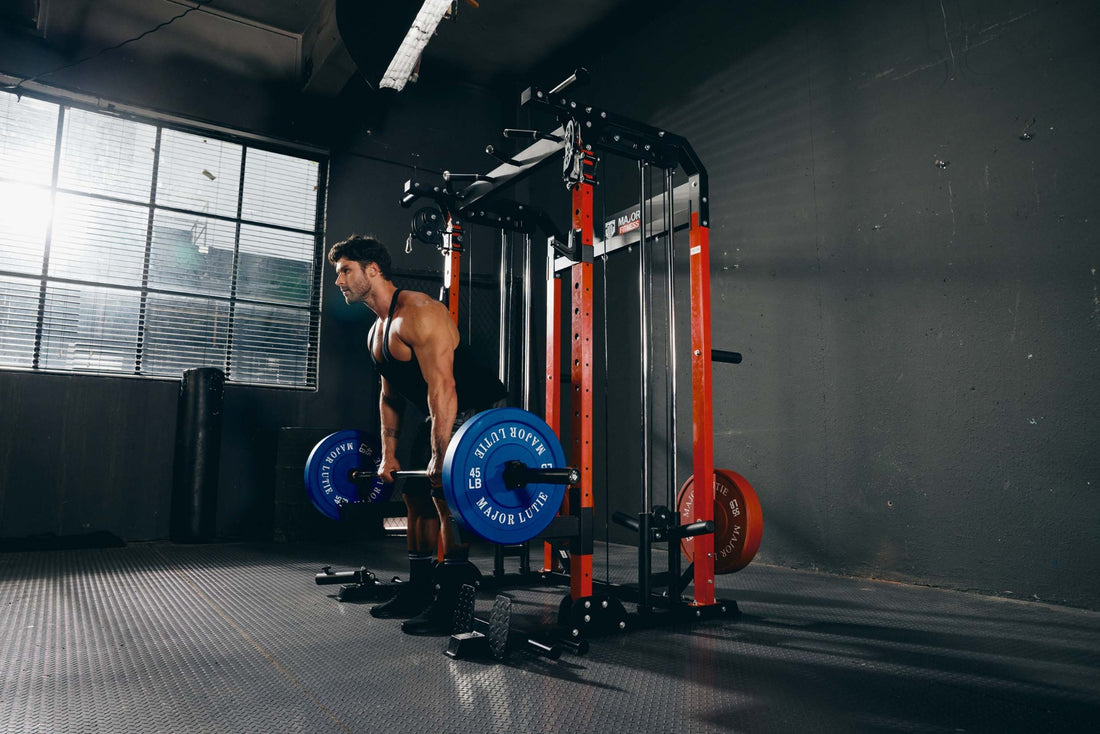
For years, the deadlift has been both revered and feared in the world of strength training. Commonly known for its capacity to build raw power, the question remains: is deadlift good for hypertrophy? If you're looking to add substantial mass and carve out a physique that turns heads, then understanding the relationship between deadlifts and hypertrophy is paramount. This article dives deep into this exercise, exploring its efficacy and uncovering the best practices to ensure you achieve your muscle-building goals.
Hypertrophy, or muscle growth, is a common goal for both novice and seasoned lifters alike. It involves increasing the size of muscle cells, leading to more prominent and defined muscles. To achieve hypertrophy, one must create a training environment that sufficiently stresses the muscles, encourages optimal recovery, and provides the nutrients necessary for growth. So, where does the deadlift stand in this equation? Let's break it all down.
The Basics of Deadlifts
The deadlift is a compound lift, meaning it engages multiple muscle groups simultaneously. Unlike isolation exercises, compound lifts like the deadlift can lead to incredibly efficient workouts since they stimulate a larger portion of your physiology in a shorter period.
The primary muscles worked during a deadlift include:
- The Glutes
- Hamstrings
- Lower Back (Erector Spinae)
- Quadriceps
- Core (Abdominals and Obliques)
- Forearms and Grip Strength Muscles
Given that these major muscle groups are involved, the potential for hypertrophy is significant. You're not only stressing one muscle but challenging an entire network of muscles that must adapt and grow stronger together.
Deadlifts and Muscle Growth: The Science
Deadlifts can undoubtedly play a crucial role in muscle hypertrophy. Here's why:
1. Progressive Overload
Progressive overload is essential for muscle hypertrophy. This principle involves gradually increasing the weight, frequency, or number of repetitions in your strength training routine to challenge your muscles continuously. Deadlifts are especially suitable for progressive overload because they allow you to lift heavy weights safely, especially when performed with correct form.
2. Hormonal Response
Large, compound movements like the deadlift stimulate the release of growth-promoting hormones such as testosterone and human growth hormone (HGH). These hormones are crucial for muscle repair and growth, amplifying the hypertrophic effects.
3. Time Under Tension
Time under tension (TUT) refers to how long a muscle is under strain during a set. While deadlifts may not offer as much TUT as isolation exercises, their ability to lift heavier weights compensates for it.

How to Incorporate Deadlifts for Maximum Hypertrophy
1. Focus on Form
Proper form is critical when performing deadlifts to maximize muscle engagement and avoid injury. Make sure your back remains straight and your core is engaged throughout the lift. Consider working with a qualified trainer if you're new to this exercise.
2. Rep Range and Volume
For hypertrophy, aim for a rep range of 6-12 repetitions per set. This allows you to lift moderately heavy weights while providing sufficient time under tension for muscle growth. Generally, 3-5 sets per workout are recommended.
3. Frequency
The frequency with which you perform deadlifts should align with your overall training program. Typically, deadlifts can be included 1-2 times per week, giving ample recovery time to the muscle groups involved.
4. Variation
Incorporate deadlift variations to target different muscle groups and add variety to your training. Romanian deadlifts, sumo deadlifts, and deficit deadlifts can each provide unique benefits.
Supplementary Exercises for Deadlift Hypertrophy
While deadlifts are highly effective for hypertrophy, complementing them with supplementary exercises can further enhance muscle growth:
- Squats: Great for building the quadriceps, hamstrings, and glutes.
- Leg Curls: Isolation exercise that targets the hamstrings.
- Glute Bridges: Particularly good for activating the glutes.
- Rows: Help in building a strong back, complementing the muscles worked during deadlifts.
- Core Work: Planks and leg raises can help build a stronger core, which is crucial for heavy lifting.
The Importance of Nutrition for Hypertrophy
No amount of heavy lifting can substitute for poor nutrition. For hypertrophy, your diet should be high in protein to support muscle repair and growth. Aim for 1.6 to 2.2 grams of protein per kilogram of body weight daily. Include a variety of protein sources such as lean meats, fish, eggs, and plant-based proteins. Don't forget carbohydrates for energy and healthy fats for hormone regulation.
Recovery: The Hidden Key to Hypertrophy
Don’t underestimate the power of recovery. Your muscles grow not during your workouts but while you’re resting. Make sure you’re getting enough sleep—7-9 hours per night is ideal—and consider integrating recovery activities such as foam rolling, stretching, and even occasional massages.
Conclusion
So, is deadlift good for hypertrophy? Absolutely. When performed with proper technique and incorporated strategically into your training regimen, deadlifts can be a powerhouse for muscle growth. Coupled with the right nutrition and recovery protocols, deadlifts can help you achieve a stronger, more muscular physique. If you haven't already, it's time to start making the deadlift a pillar of your hypertrophy training program.




















